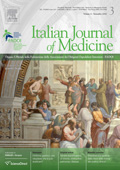Reviews
30 April 2013
Vol. 4 No. 3 (2010)
Hormonal contraception and the risk of venous thrombosis: Management recommendations from the Piedmont Region and the Consensus Conference of the Italian National Institute of Health

Publisher's note
All claims expressed in this article are solely those of the authors and do not necessarily represent those of their affiliated organizations, or those of the publisher, the editors and the reviewers. Any product that may be evaluated in this article or claim that may be made by its manufacturer is not guaranteed or endorsed by the publisher.
All claims expressed in this article are solely those of the authors and do not necessarily represent those of their affiliated organizations, or those of the publisher, the editors and the reviewers. Any product that may be evaluated in this article or claim that may be made by its manufacturer is not guaranteed or endorsed by the publisher.
869
Views
5641
Downloads








